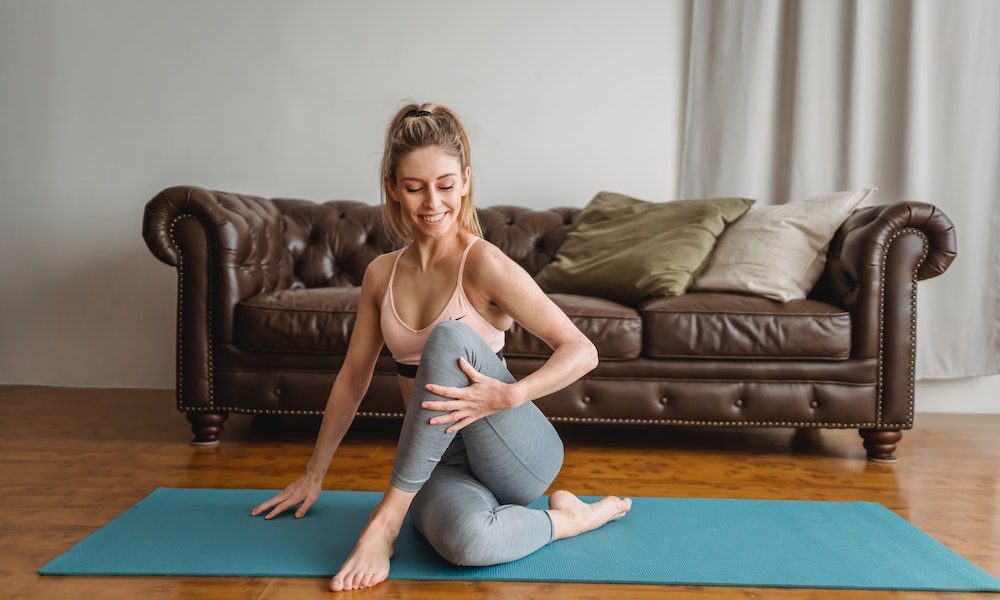The lower back supports the body and protects the spinal cord. Since it handles heavy loads and high stress from everyday movements, it may experience pain ranging from a merely irritating dull ache to a weakening stabbing sensation.
Lower back pain is a musculoskeletal problem that affects about 7.5% of the global population. It is a public health concern, but that doesn’t mean that it’s something you have to put up with. There are yoga poses for lower back pain that can help you find relief.1
What Are the Common Causes of Lower Back Pain?


Lower back pain may often be annoying, but it can sometimes be debilitating enough that it can affect comfort and productivity. In fact, it is the most common reason why patients visit their physicians and why employees skip work.2
Figuring out what’s causing lower back pain can help you address and prevent it. Here are the common culprits that might put you at greater risk of this type of pain:
- Excessive sitting
- Incorrect lifting or pulling technique
- Sudden awkward movement
- Improper posture
- Sciatica
- Repeated heavy lifting
- Fractures
- Sports injuries
- Overextended muscles
- Herniated disk
- Arthritis
- Osteoporosis
- Spinal stenosis
Yoga To Relief Your Lower Back Pain
If you’re dealing with lower back pain, consider trying yoga. This mind-body practice uses movements that help relax tight muscles, build strength, increase mobility, and, ultimately, alleviate back pain.
A study revealed that yoga could help ease chronic back pain in terms of pain and activity limitation. Another research showed that yogis experienced small to moderate decreases in pain intensity and boosted function.3,4
To get started on this practice, here are the 10 best yoga poses for lower back pain relief that you can try at home.
1. Child’s Pose (Balasana)
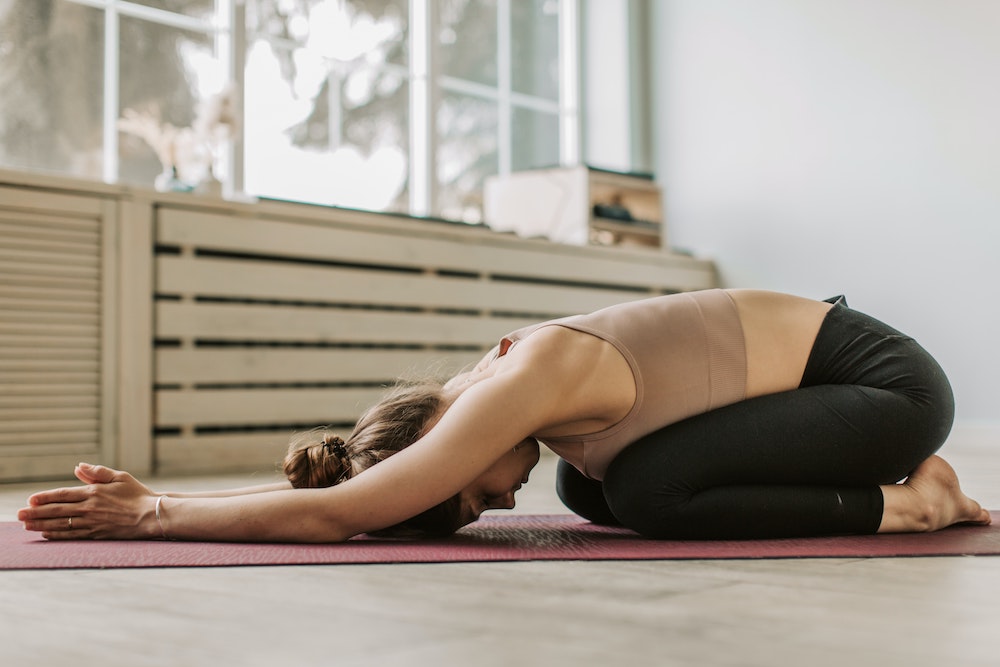

The child’s pose relieves stress from the lower back by elongating and aligning the spine. It is an excellent resting pose to practice after a tiring day.
Here are the step-by-step instructions:
- Kneel with knees hip-width apart and the tops of the feet on the mat
- Inhale, then exhale as you bring your belly down between your thighs
- Lengthen your neck and spine
- Rest your forehead on the mat
- Stretch your arms as far out as you can
- Hold for 1-2 minutes
2. Downward-Facing Dog (Adho Mukha Svanasana)
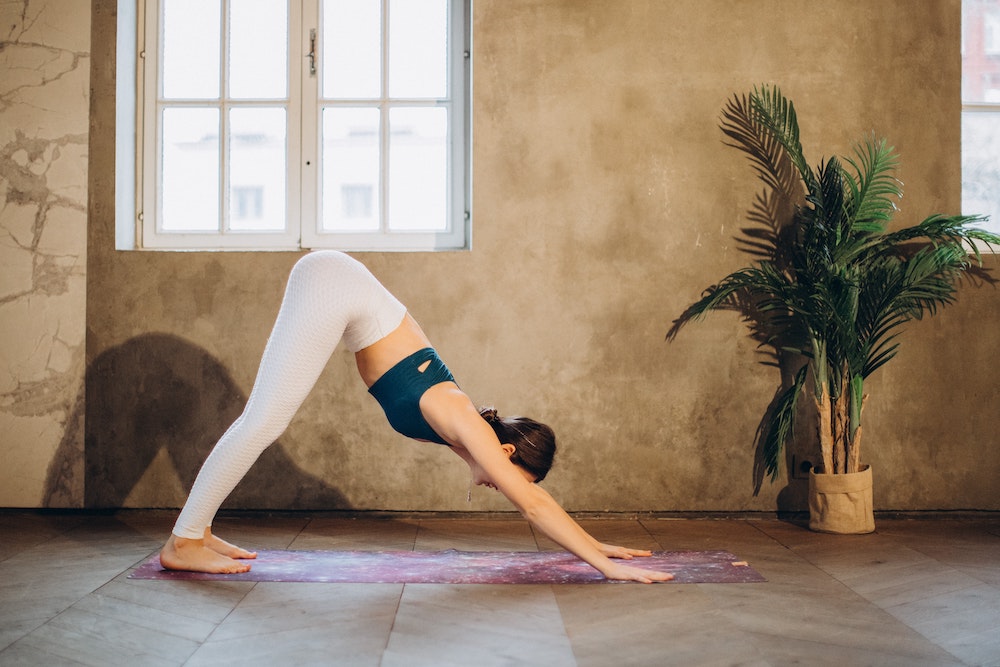

This beginner-friendly yoga pose is a total body stretch that improves circulation and strengthens the arms, legs, and abdominal muscles. It also alleviates lower back pain by supporting the spine.
Try the downward-facing dog pose by following these steps:
- Get down on all fours with knees hip-width apart
- Exhale and raise your knees off the mat
- Straighten your knees without locking your legs as you lift your hips
- Lengthen your spine and place your heels toward the mat
- Hold for 5-10 breaths
Read More: Best Yoga Poses For Beginners
3. Pigeon Pose (Eka Pada Rajakapotasana)
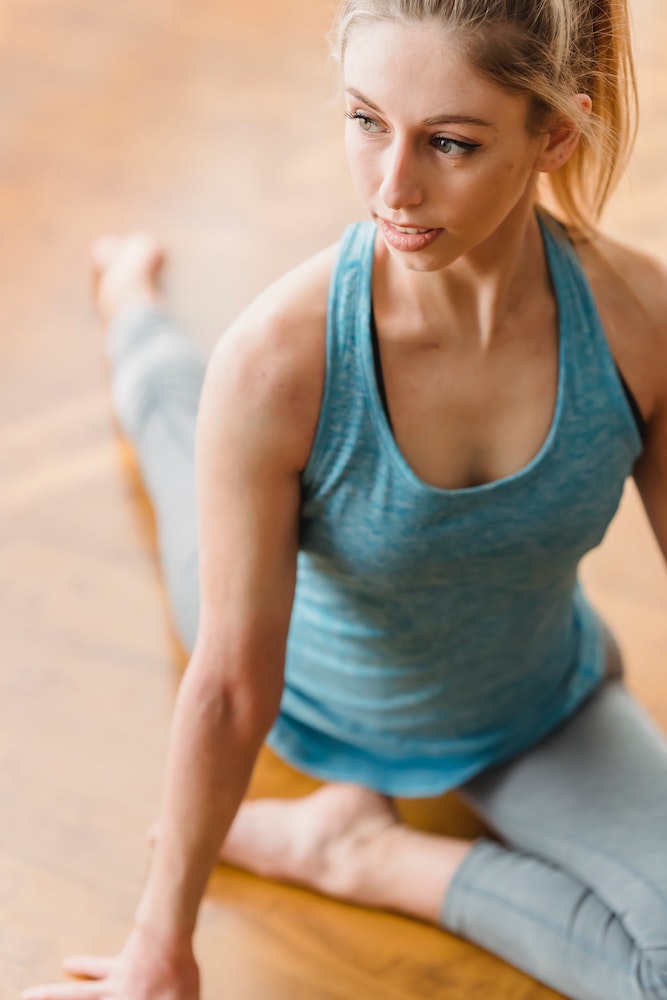

Pigeon pose is a forward bend that stretches the hip rotators and flexors. This is especially helpful in loosening tight hips from sitting for long periods that cause lower back pain.
To do this pose, practice these steps:
- From a downward-facing dog pose, bring your knee forward and turn it out to the side
- Slowly lower your legs to the mat
- Place your ankle in front of your hip and point your toes
- Try to keep your legs together as you lengthen your spine
- Exhale, then walk your hands forward and bring your upper body towards the mat
- Hold for 5-10 breaths, then switch sides
4. Triangle Pose (Utthita Trikonasana)
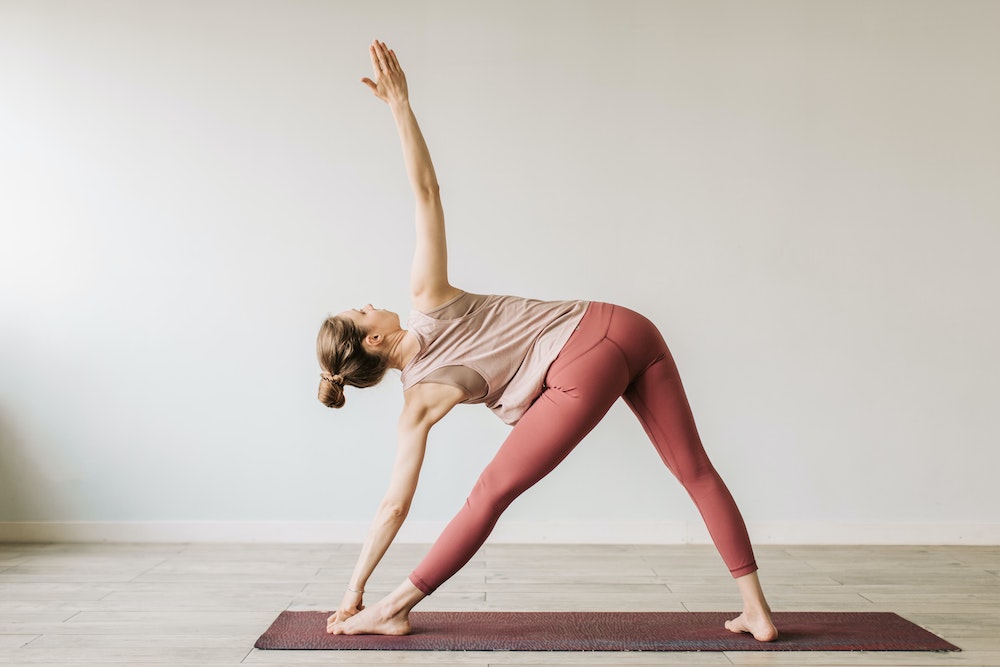

The triangle pose is a foundational pose that stretches the muscles along the outer hip. It reduces stiffness in the spine by targeting the lower back.
Here are the instructions to do this pose:
- Stand straight with your feet together
- Extend your arms with your palms facing down
- Place your foot out to 90 degrees and your other foot out to 45 degrees
- Exhale as you bend to the side
- Stretch your arm toward the ceiling and your other arm toward the mat while maintaining a straight back
- Hold for 5-10 breaths, then switch sides
5. Upward-Facing Dog Pose (Urdhva Mukha Svanasana)
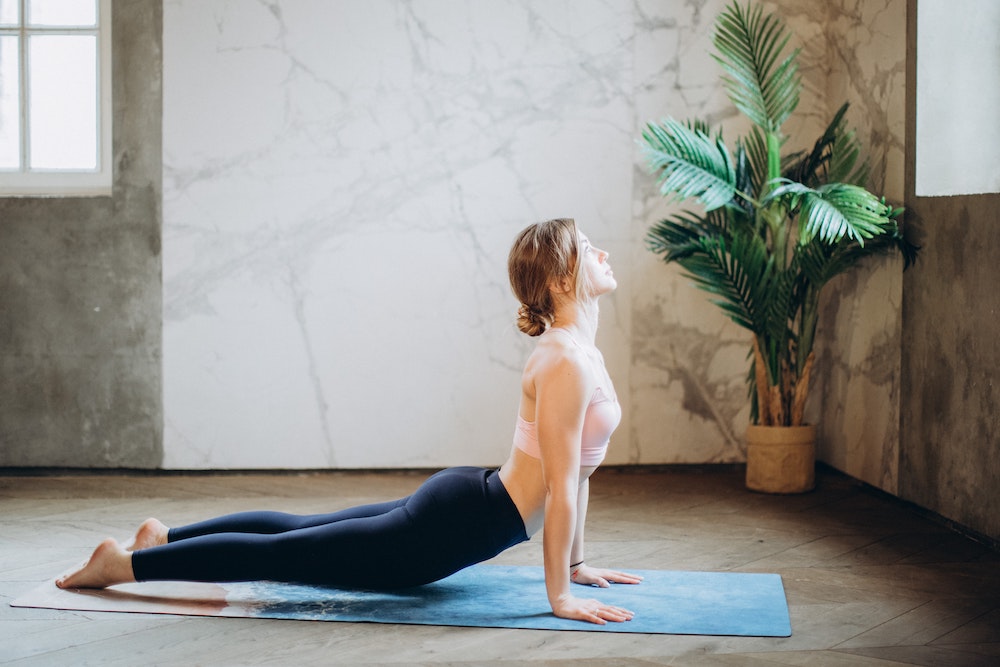

This classic yoga pose opens up the chest, stretches the abdominal muscles, and elongates the back. Practicing this backbend strengthens and activates the spinal muscles, which can help relieve lower back pain, improve posture, and boost the mobility of the upper body.
Since the upward-facing dog pose requires you to put all of your weight on the tops of your feet and hands, it can be challenging to practice correctly. Here are the steps to do this safely:
- Start with a low plank with your palms facedown beside your lower ribs
- Extend your legs, tilt your head toward the ceiling, and draw your shoulders back
- Lift your torso off the floor with the arms straight
- Hold for 5-10 breaths
6. Sphinx Pose (Salamba Bhujangasana)
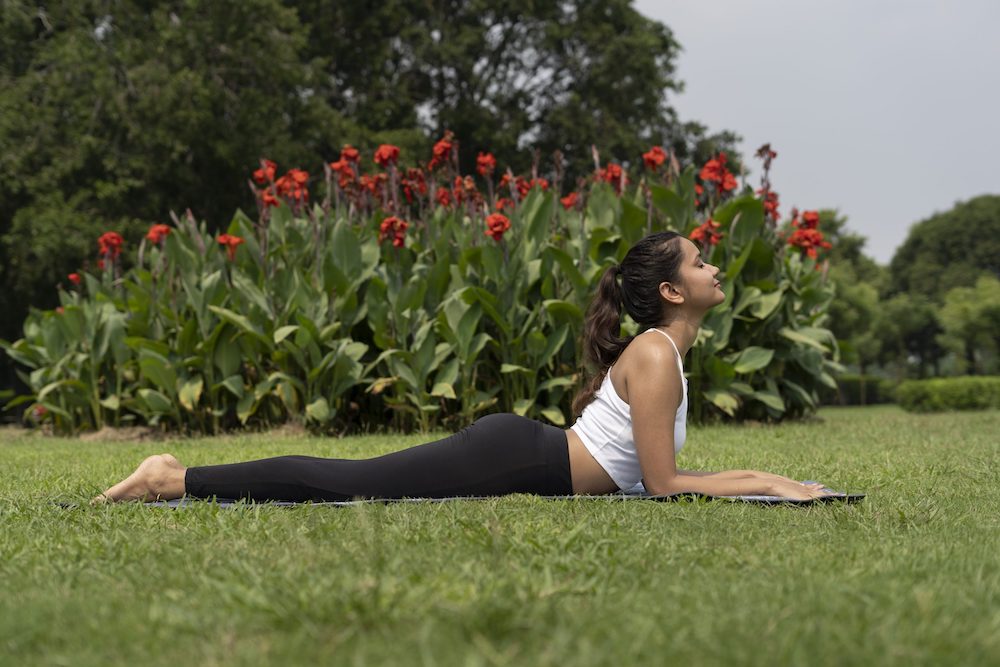

This gentle backbend, which resembles a mythological sphinx, stretches the spine and engages the abdominal muscles. By practicing it, you counteract a long day of sitting.
Follow these steps to do the sphinx pose:
- Lie on your stomach with your legs together
- Bring your elbows under your shoulders
- Place your forearms on the floor
- Inhale, then lift your upper body and head into a gentle backbend
- Hold for 5-10 breaths
7. Standing Forward Bend (Uttanasana)
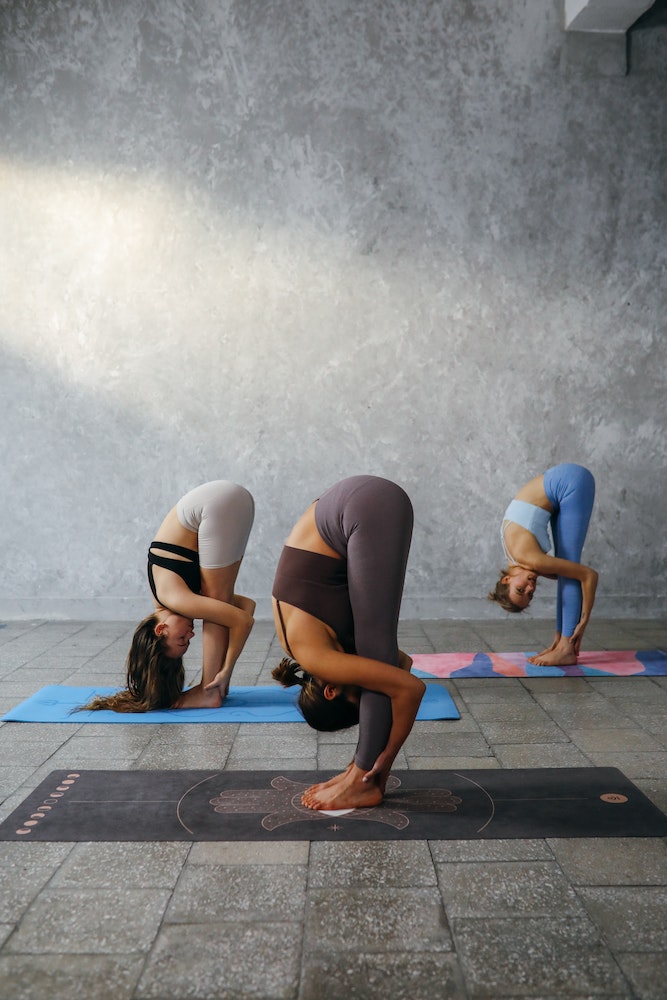

The standing forward bend, also known as the forward fold, stretches the lower, middle, and upper back. When practiced correctly, it is a deep and satisfying stretch.
To avoid overextending your hamstrings while doing this pose, follow these instructions:
- From downward-facing dog, step forward with your feet shoulder-width apart
- Straighten your legs out and try not to lock your knees
- Bring your torso down
- Place your palms on the mat near your feet
- Hold for 30-60 seconds
8. Garland Pose (Malasana)
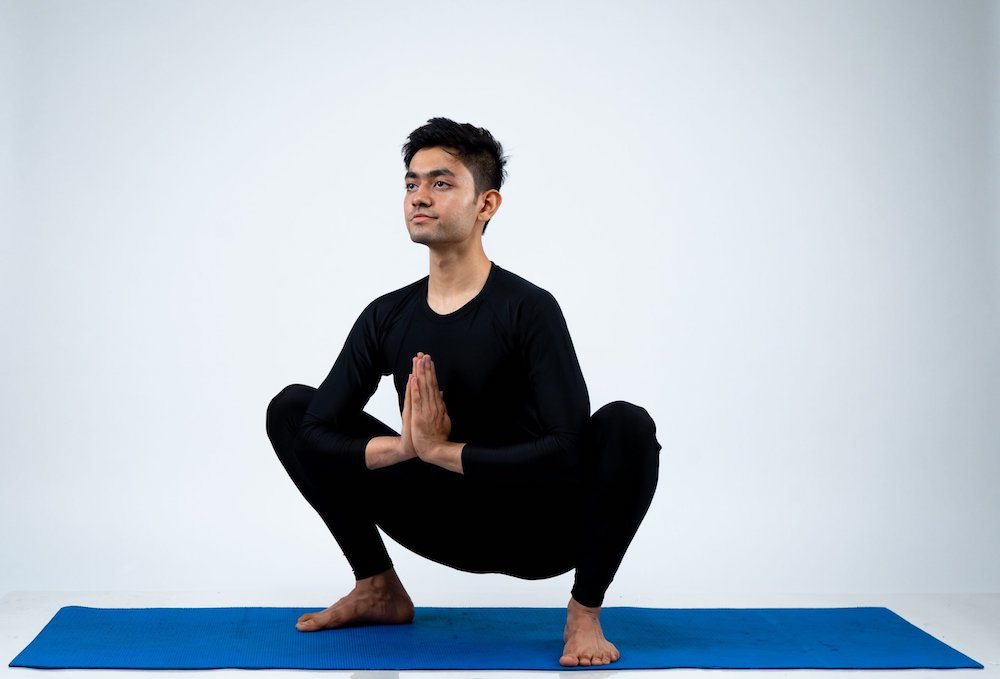

The garland pose effectively counters tightness from sitting too much. It stretches the lower back, opens the hips, and strengthens the ankles.
Do this pose safely by practicing these steps:
- Squat with your feet close together
- Bring your thighs slightly wider than your torso
- Exhale, then place your torso forward between your thighs
- Press your elbows against your knees
- Bring your palms together
- Hold for 30–60 seconds
9. Crescent Lunge Pose (Anjaneyasana)
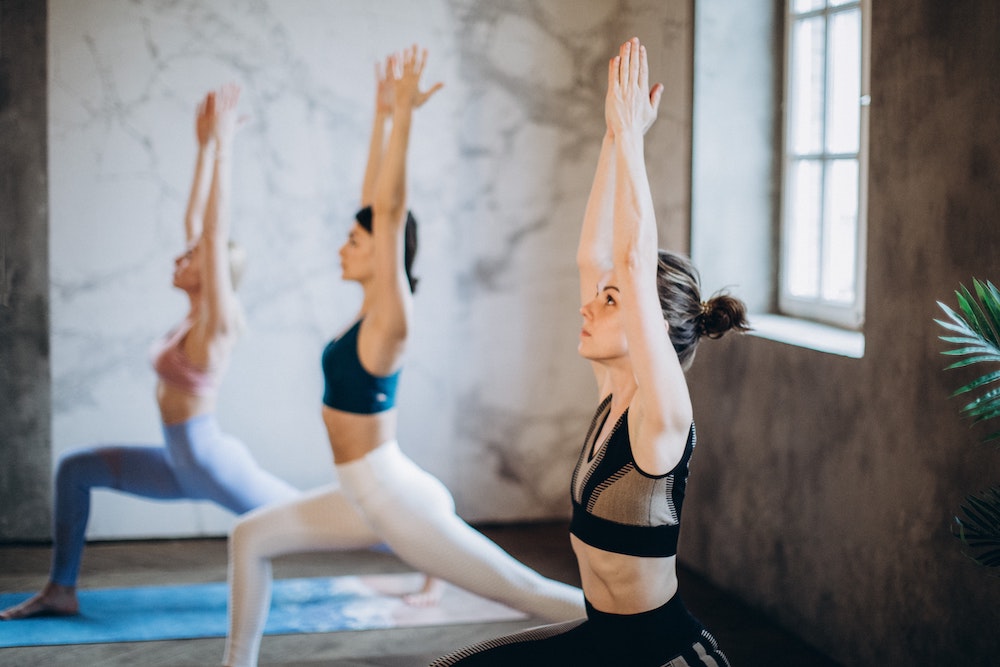

The crescent lunge pose is a deep-stretch ideal for those who sit too much or do lots of frontload-bearing workouts. It takes the pressure off the lower back by targeting the hip flexors and quadriceps.
Follow these steps to practice this energizing pose:
- From downward-facing dog, step your foot forward between your hands
- Bend your knee to 90 degrees while keeping your back leg straight
- Ensure your thigh is parallel to the floor
- Raise your arms toward the ceiling
- Hold for 30–60 seconds, then switch sides
10. Happy Baby Pose (Ananda Balasana)
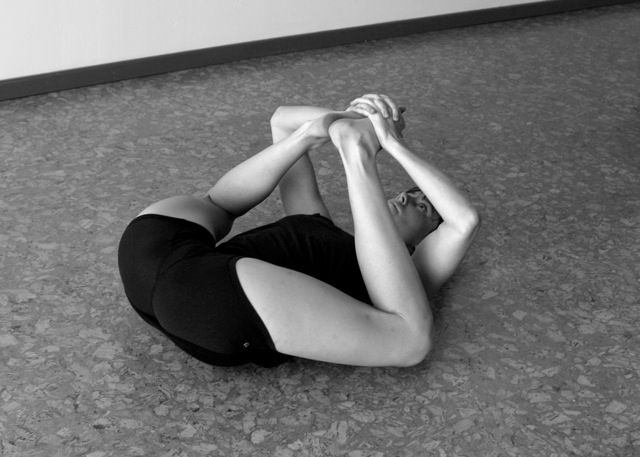

This relaxing and restorative pose is perfect for ending a yoga session. It involves a gentle, calming motion that stretches the back and hip abductors.
To ensure proper form while practicing this pose, follow these instructions:
- Lie on your back
- Pull your knees toward your chest
- Inhale, then grab the inside or outside of your feet
- Bring your feet toward your chest
- Place your ankles over your knees at a 90-degree angle
- Extend your spine
- Hold for 30-60 seconds
In Short
These yoga poses for lower back pain address weak abdominal and pelvic muscles. By practicing them regularly, you can maintain a healthy back.
While yoga is generally safe to do every day, remember to listen to your body and avoid overstretching so you don’t hurt yourself. If you’re new to yoga, begin slowly then gradually increase the intensity of the poses.
In addition to yoga, acupressure is also a great way to treat lower back pain. Check out our list of the 10 best acupressure points for low back pain.
To seek better back pain relief, consider also trying yoga poses for upper back pain or consult a doctor.
References:

